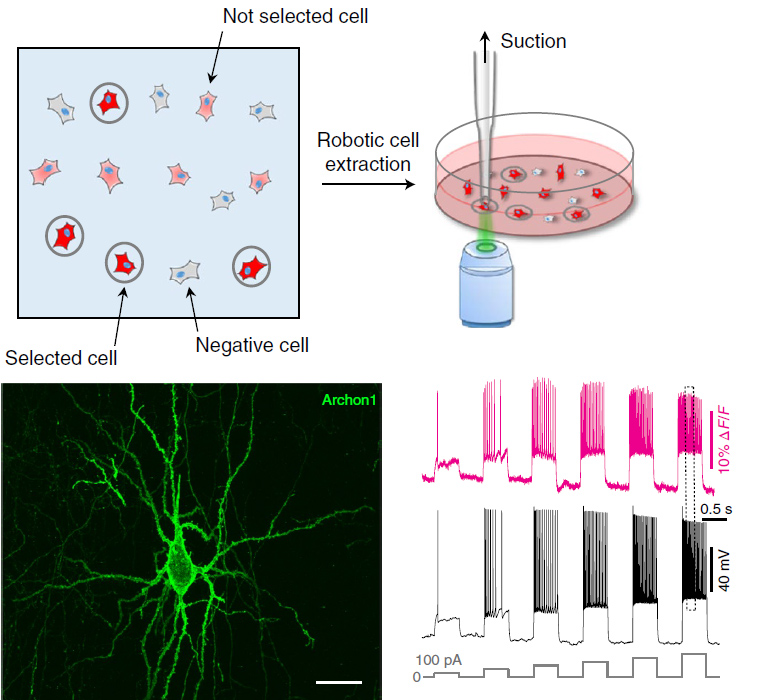A robotic multidimensional directed evolution approach applied to fluorescent voltage reporters
[Publisher Link] [Local Copy]
Piatkevich KD*, Jung EE*, Straub C, Linghu C, Park D, Suk HJ, Hochbaum DR, Goodwin D, Pnevmatikakis E, Pak N, Kawashima T, Yang CT, Rhoades JL, Shemesh O, Asano S, Yoon YG, Freifeld L, Saulnier JL, Riegler C, Engert F, Hughes T, Drobizhev M, Szabo B, Ahrens MB, Flavell SW, Sabatini BL, Boyden ES (2018) A robotic multidimensional directed evolution approach applied to fluorescent voltage reporters, Nature Chemical Biology 14(4):352-360. (*, co-first authors)

We developed a new way to engineer complex proteins toward multidimensional specifications using a simple, yet scalable, directed evolution strategy. By robotically picking mammalian cells that were identified, under a microscope, as expressing proteins that simultaneously exhibit several specific properties, we can screen hundreds of thousands of proteins in a library in just a few hours, evaluating each along multiple performance axes. To demonstrate the power of this approach, we created a genetically encoded fluorescent voltage indicator, simultaneously optimizing its brightness and membrane localization using our microscopy-guided cell-picking strategy. We produced the high-performance opsin-based fluorescent voltage reporter Archon1 and demonstrated its utility by imaging spiking and millivolt-scale subthreshold and synaptic activity in acute mouse brain slices and in larval zebrafish in vivo. We also measured postsynaptic responses downstream of optogenetically controlled neurons in C. elegans.
Note: The robotic cell picker is commercially available from this company. Of the authors on the paper, Balint Szabo is a founder of the company; the other authors are not financially affiliated with the company.
Resources associated with this Publication:
[Archon1: well-localized, high-sensitivity, photostable fluorescent voltage indicator]